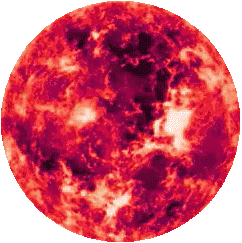
Teegarden Star System
The Teegarden Star System contains 1 Star and 3 Planets.
2 Planets are habitable planet candidates, planets Teegarden I and II.
The Teegarden Star System is located within near the inner rim of the Orion Arm, within the Local Fluff of the Local Bubble, between the Radcliffe wave and Split linear structures (formerly Gould Belt) in the Milky Way Galaxy, which is 26,000 light years away from the massive Sagittarius black hole at the center of the Galaxy.
/ Star & Planets / Stars & Planets List 0 to 20 Light Years / Teegarden Star System
73.569 Trillion Miles
12.5140 Light Years
3.8368 Parsecs
Teegarden's Star

M6.5V Class Red Dwarf
4,287 F Photosphere
Moderate Flares
8 Billion Years Old
Main Sequence
Population II Star
Heavy Metal Poor
Teegarden III
0.0791 AU
Tidally Locked
0.82 (EM)
Terran
? Miles
? Density
? g
Atmosphere ?
Frozen
Life ?
1 AU = 92,955,807 Miles
Chemical Rocket Travel Time
125,140 Earth Years
Fission Rocket Travel Time
251.79 Earth Years
Fusion Rocket Travel Time
125.89 Earth Years
Laser Light Sail Travel Time
62.94 Earth Years
Teegarden's Star Planets Probability to Host Life
Teegarden I (Ibidian): Planet Teegarden I has a 60% estimated chance of having a temperate surface environment, but its overall habitability is uncertain and depends heavily on whether it has a substantial atmosphere, which is only a 3% chance according to some estimates. While it orbits in the habitable zone, potentially allowing for liquid water, other factors like being tidally locked and the star's type could impact life's potential.
Teegarden II (Talmolok): The chances for life on planet Teegarden II are considered low, with estimates giving it only a 3% chance of having a temperate surface environment. Although Teegarden II is in the star's habitable zone and has a mass similar to Earth, it is colder than its sibling planet, Teegarden I. Scientists need more data to determine if the planet has a sufficiently dense atmosphere and a magnetic field to protect itself from the red dwarf star's flares, and support liquid water and life.


The planet Teegarden I is an interesting candidate to be habitable. It's size is remarkably close to Earth size. It's parent star also has moderate flares, so there is a good chance that Teegarden I may have an significant atmosphere. More data is needed to see if it has an atmosphere, and to determine its atmospheric components.